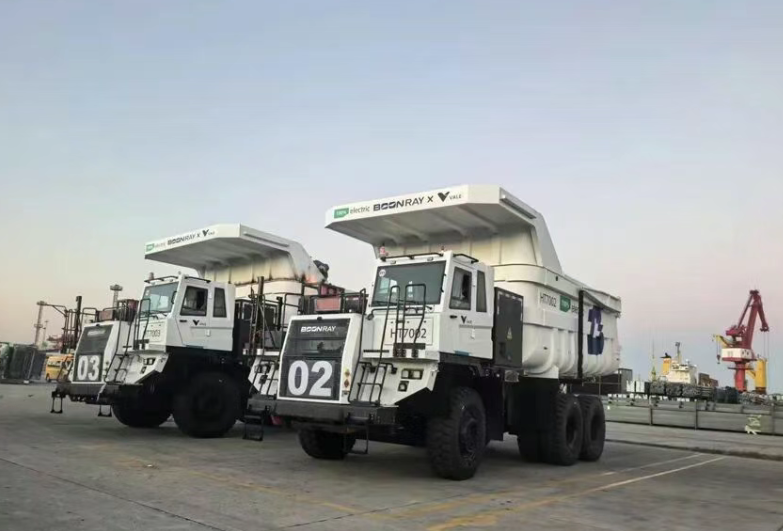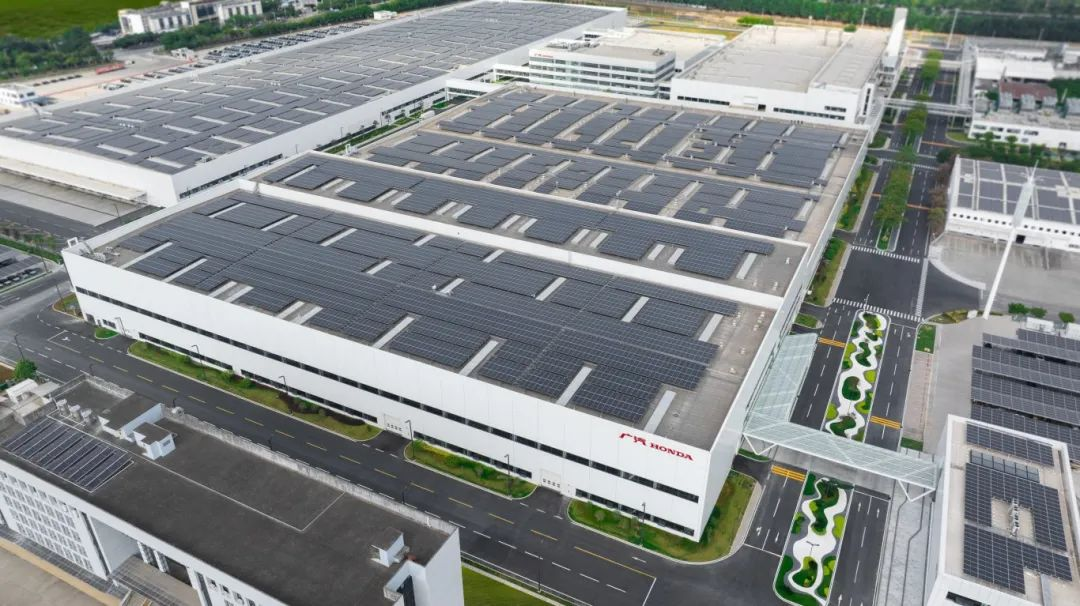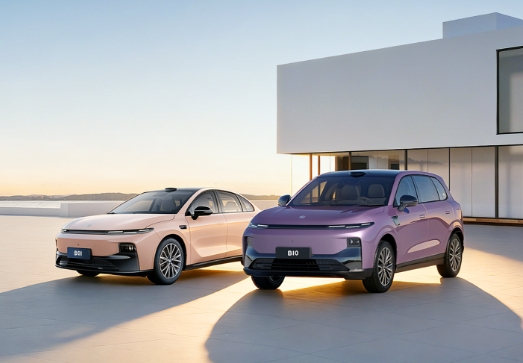Hello everyone, this is Gasgoo. In this episode of "Wheels of Change: Stories of Chinese Auto Giants," let's talk about the legacy of Dongfeng Motor.
From joint ventures to independence, Dongfeng Motor stands on its own feet
Dongfeng Motor Corporation was built and thrived through its military origins. Its predecessor, the Second Automobile Works (SAW) of China, founded in 1969, initially served as a military enterprise producing vehicles for the People's Liberation Army of China.
If military vehicles laid the foundation for the SAW, commercial vehicles paved the way for the development of the Dongfeng brand. Dongfeng's first significant milestone was the production of the Dongfeng 140-1, its first medium-duty truck, marking the beginning of Dongfeng's commercial vehicle legacy.
On the other hand, Dongfeng's passenger vehicle journey started with joint ventures.
In 1992, Dongfeng embarked on a joint venture strategy, producing its first jointly developed sedan, the Fukang, which marked the beginning of Dongfeng's passenger car business. Thereafter, Dongfeng established multiple joint ventures with global auto giants such as Nissan Motor, Citroën, Peugeot, and Honda Motor.
In 2002, Dongfeng began to focus on the development and promotion of its own brands, and officially established the Dongfeng passenger vehicle department in 2007, whose name was changed into Dongfeng Passenger Vehicle Company (DFPV) two years later.
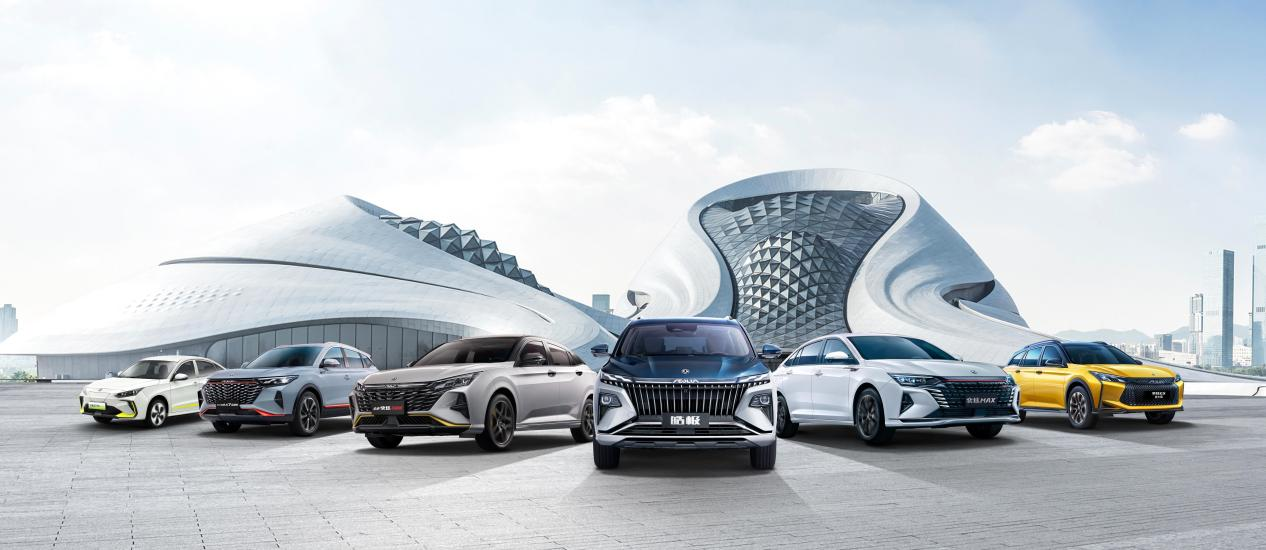
Photo credit: Dongfeng Motor
In 2009, DFPV introduced its own passenger car brand, Aeolus (Fengshen), followed by other brands such as Forthing, and Fengon.
In a bid to compete amidst the new energy vehicle transformation, Dongfeng Motor first introduced a series of BEV and PHEV models, such as the Dongfeng Forthing EV and the Dongfeng Aeolus AX7 PHEV. Subsequently, it set up dedicated new energy vehicle brands such as VOYAH, MHERO, NAMMI, and Dongfeng eπ.
Despite the expanding brand matrix, Dongfeng Motor's performance has been declining in recent years. In 2023, its annual sales dropped from 3.458 million vehicles in 2020 to 2.42 million vehicles.
The main reasons behind the downturn include a significant slip in sales of traditional oil-fueled vehicles, with the marginal increase in new energy vehicles failing to offset the gap. Meanwhile, Dongfeng Motor's operating income decreased from 108.4 billion RMB in 2020 to 92.6 billion RMB in 2022.
To turnaround the situation, Dongfeng is accelerating its transition to new energy vehicles.
In 2021, Dongfeng launched the Eastern Wind Rising plan and the Leap Forward Action for technological innovation. In 2023, it unveiled the Three-Year Transformation and Upgrading Action and plans to invest 50 billion RMB in the field of own-brand new energy vehicles. To this end, Dongfeng is further gathering resources, increasing the production and sales scale of new energy vehicles, and optimizing its system capabilities to better compete in the fierce market.
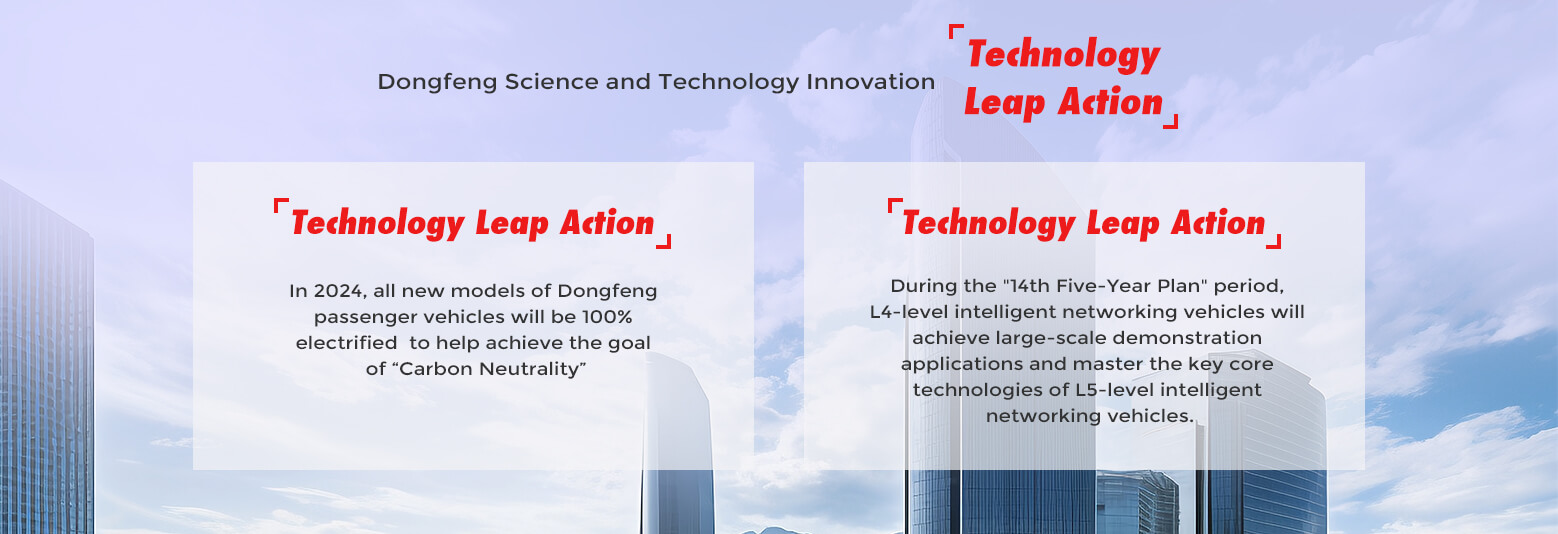
Photo credit: Dongfeng Motor
Consequently, Dongfeng Motor's R&D investment is increasing year by year. According to company’s 2022 financial report, Dongfeng's R&D investment reached 8.078 billion RMB, up 11.74% over 2021, with new energy R&D investment reaching 3.784 billion RMB, soaring 114.4% year on year.
In the first half of 2023, Dongfeng's R&D investment amounted to 3.462 billion RMB, rising 12.62% over 2022, with new energy R&D investment standing at 1.56 billion RMB, a 49.3% jump from a year ago.
Under comprehensive reforms, Dongfeng Motor's sales of new energy vehicles achieved a marginal increase in 2023, reaching 524,000 vehicles, mainly due to the growth of the VOYAH brand. Data shows that VOYAH's sales surpassed 50,000 vehicles in 2023, a year-on-year increase of 160%, and successfully achieved the monthly sales exceeding 10,000 vehicles in December last year.
However, due to continuous expansion of investment, Dongfeng Motor's losses were also intensifying. On March 8 this year, Dongfeng Motor issued a profit warning, expecting a net loss attributable to shareholders of not more than 4 billion RMB for the full year 2023. This marks the first time since its listing in 2005 that the group's net profit attributable to shareholders has turned negative.
Dongfeng Motor's restructuring sharpens brand matrix
Dongfeng Motor Group Co., Ltd. (referred to as "Dongfeng Motor Group"), a listed subsidiary of Dongfeng Motor Corporation on the Hong Kong Stock Exchange, serves as the automaker’s main capital operation platform, overseeing several joint ventures like Dongfeng Honda and Dongfeng Peugeot Citroen, as well as wholly-owned subsidiaries including Dongfeng Passenger Vehicle Company, VOYAH, and Mengshi Technology.
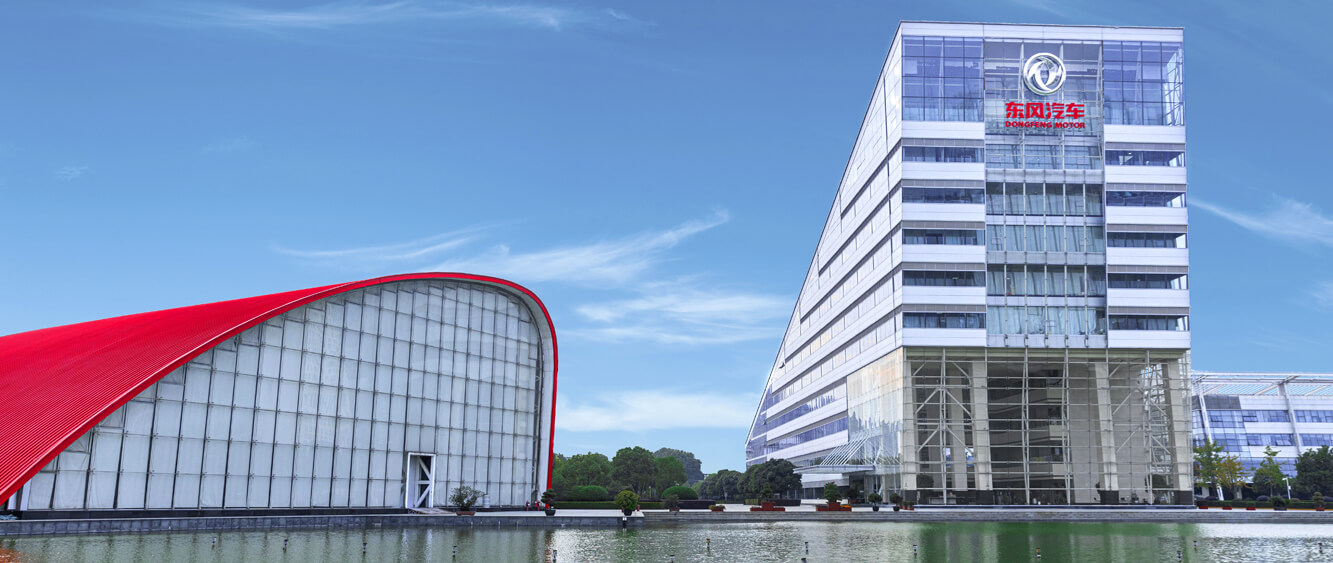
Photo credit: Dongfeng Motor
In August 2023, Dongfeng Motor announced a significant adjustment of its independent new energy passenger vehicle business, integrating the management of the Aeolus, eπ, and NAMMI brands, which were previously under different entities.
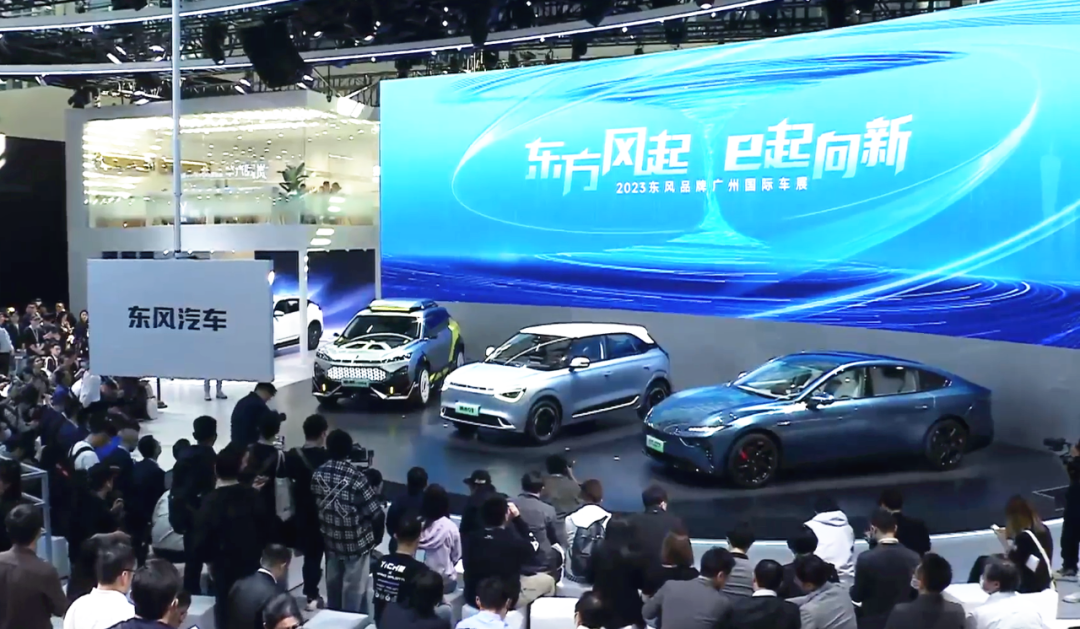
Photo credit: Dongfeng Motor
According to Dongfeng, the unified management of the three brands is part of the response to the rapid development of the new energy vehicle industry.
Specifically, Dongfeng will establish Dongfeng Passenger Vehicle Sales Co., Ltd. and Dongfeng Passenger Vehicle Manufacturing Headquarters, unifying the brands’ marketing, manufacturing, product planning, and project management, aiming for centralized business operations, manufacturing, and marketing.
Additionally, Dongfeng's headquarters will directly take charge of the self-owned passenger vehicle brands' operations.
Dongfeng hopes that this structural adjustment will streamline management levels, enhance decision-making efficiency, and seize opportunities in the rapidly evolving new energy vehicle market.
The competition between China’s new energy vehicle makers has gone into a systematic rivalry, rather than solely relying on individual products or brands. Dongfeng's restructuring has facilitated the refinement of its brand system.
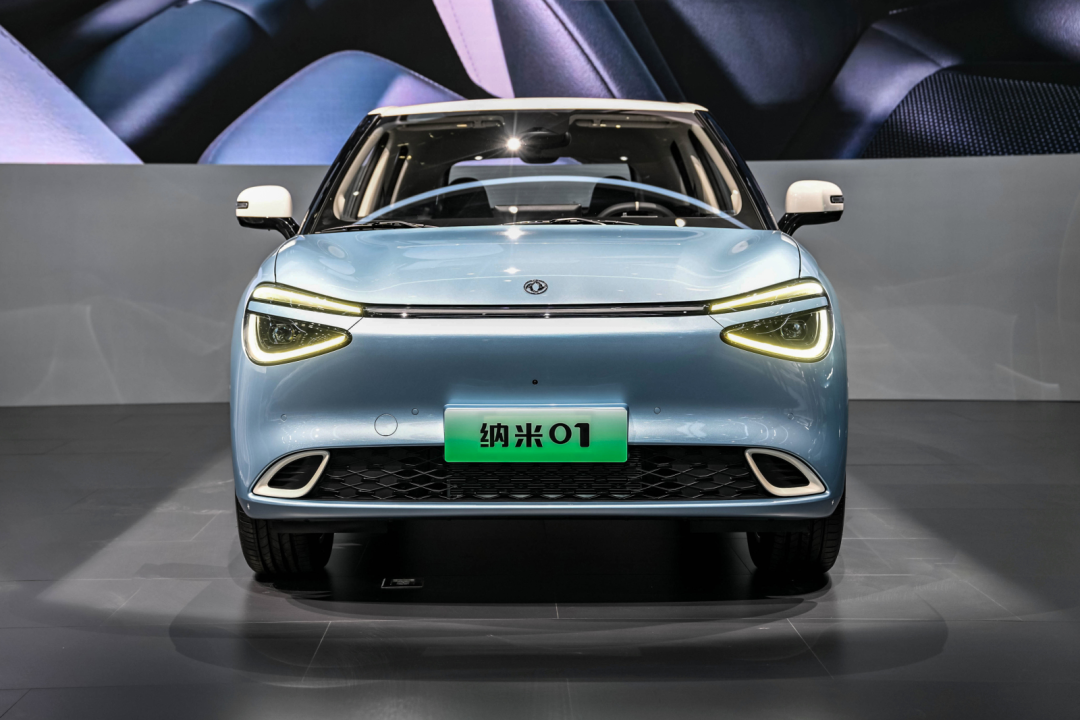
NAMMI 01; photo credit: Dongfeng Motor
Moreover, Dongfeng Motor laid out specific plans for the three major product lineups under the Dongfeng brand. Dongfeng Aeolus will accelerate its transformation from oil-fueled vehicles to energy-efficient vehicles, Dongfeng eπ will be positioned as a mainstream new energy vehicle brand, and Dongfeng NAMMI will primarily target the compact all-electric vehicle market.
Thus, Dongfeng has officially established a comprehensive brand portfolio encompassing MHERO for premium electric off-road vehicles, VOYAH for high-end new energy vehicles, and the Dongfeng brand for the mass market in the passenger car field.
Ante up on new energy vehicles
In recent years, Dongfeng has been pouring its resources into the development of new energy vehicles.
Back in 2005, Dongfeng Motor Group debuted on the Hong Kong Stock Exchange, becoming one of the earliest Chinese state-owned automobile giants to go public in Hong Kong. Fast forward 15 years to 2020, Dongfeng Motor Group returned to the Shanghai Stock Exchange, forming a dual-listing pattern.
At the same time, Dongfeng kicked off its first refinancing plan since going public, aiming to raise 21 billion RMB in total. The primary purpose of this financing was to increase investments in the development of new energy passenger car projects, next-generation automobiles, and innovative technologies.
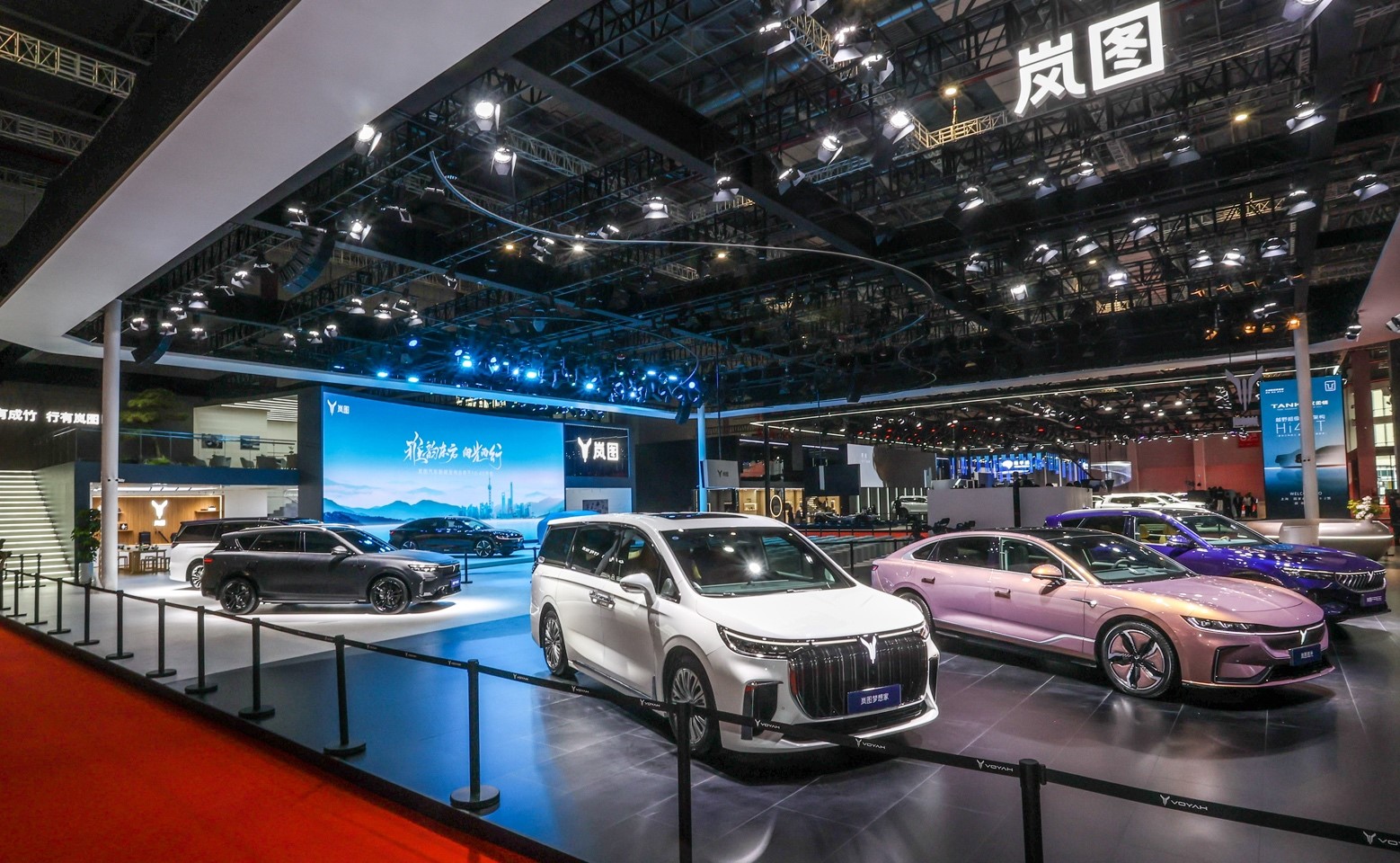
Photo credit: Dongfeng Motor
In July 2020, Dongfeng introduced its high-end new energy passenger car brand, VOYAH. Roughly 7 billion RMB of the total funds raised was earmarked for this new brand.
However, VOYAH struggled to meet expectations. By the end of 2022, its cumulative annual sales were merely 19,400 units, nearly 40% below its annual target of 31,000 units.
Nonetheless, Dongfeng remained resolute in its commitment to new energy vehicle development.
In early 2023, the company launched its new energy strategic layout and implemented the Three-Year Transformation and Upgrading Action plan for the years of 2023 to 2025. By 2024, Dongfeng Motor aim to only launch electrified models under its wholly-owned passenger car brands. By 2025, new energy vehicles should account for 50% of its self-owned brands’ sales and 70% of its own-brand passenger car sales.
To this end, Dongfeng was continuously refreshing its brand matrix and expanding its competitive advantages in 2023.

MHERO 917; photo credit: Dongfeng Motor
MHERO, the luxury electric off-road vehicle brand, debuted its flagship model, the MHERO 917. VOYAH introduced new or revamped models such as the Zhuiguang sedan, the all-new FREE SUV, and the all-new DREAMER MPV. Aeolus launched its first battery-electric SUV, the SKY EV01, riding on the aluminum-based lightweight platform, Mach E.
Moreover, Dongfeng Motor launched the Dongfeng eπ mainstream tech-driven electric vehicle brand, as well as the NAMMI battery-electric vehicle brand.
As a result, Dongfeng has established a comprehensive brand portfolio covering luxury, high-end, mainstream, and compact segments in the new energy passenger car sector.
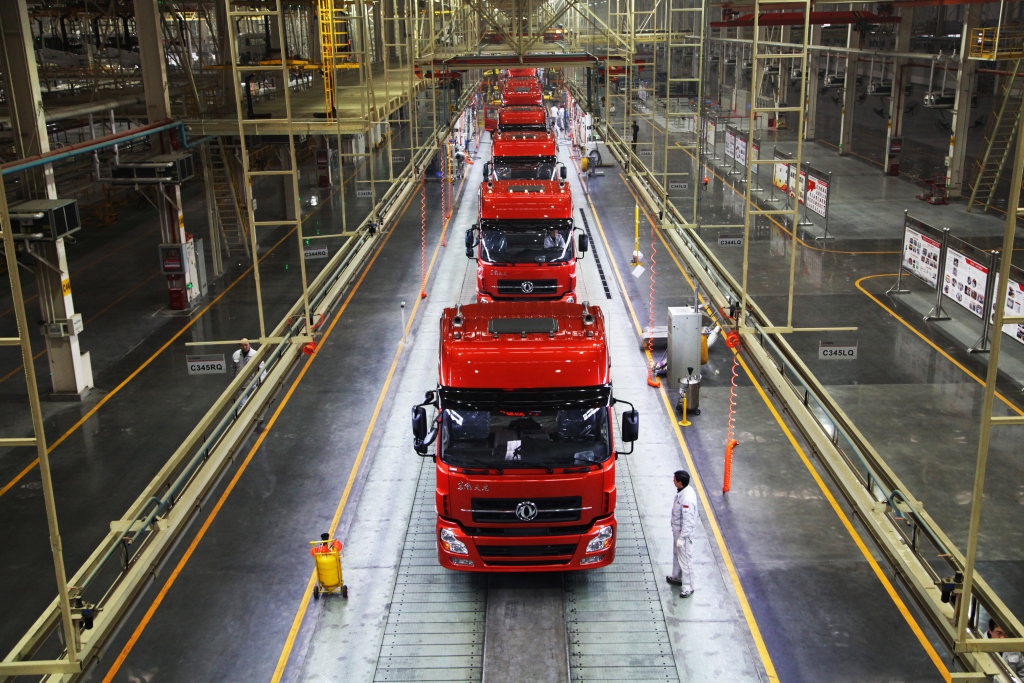
Photo credit: Dongfeng Motor
In the commercial vehicle sector, Dongfeng is actively transitioning as well.
In the medium and heavy-duty truck segment, it has formed a differentiated development pattern under three self-owned brands, including Dongfeng, Chenglong, and VASOL. On the other hand, the company’s light commercial vehicle unit is exploring new markets to meet the electrification demand of in the fields of modern urban logistics and public services.
Dongfeng's new energy commercial vehicle sector, including BEV, PHEV, and fuel-cell vehicles, saw a year-on-year sales increase in 2023, reaching 71,000 units.
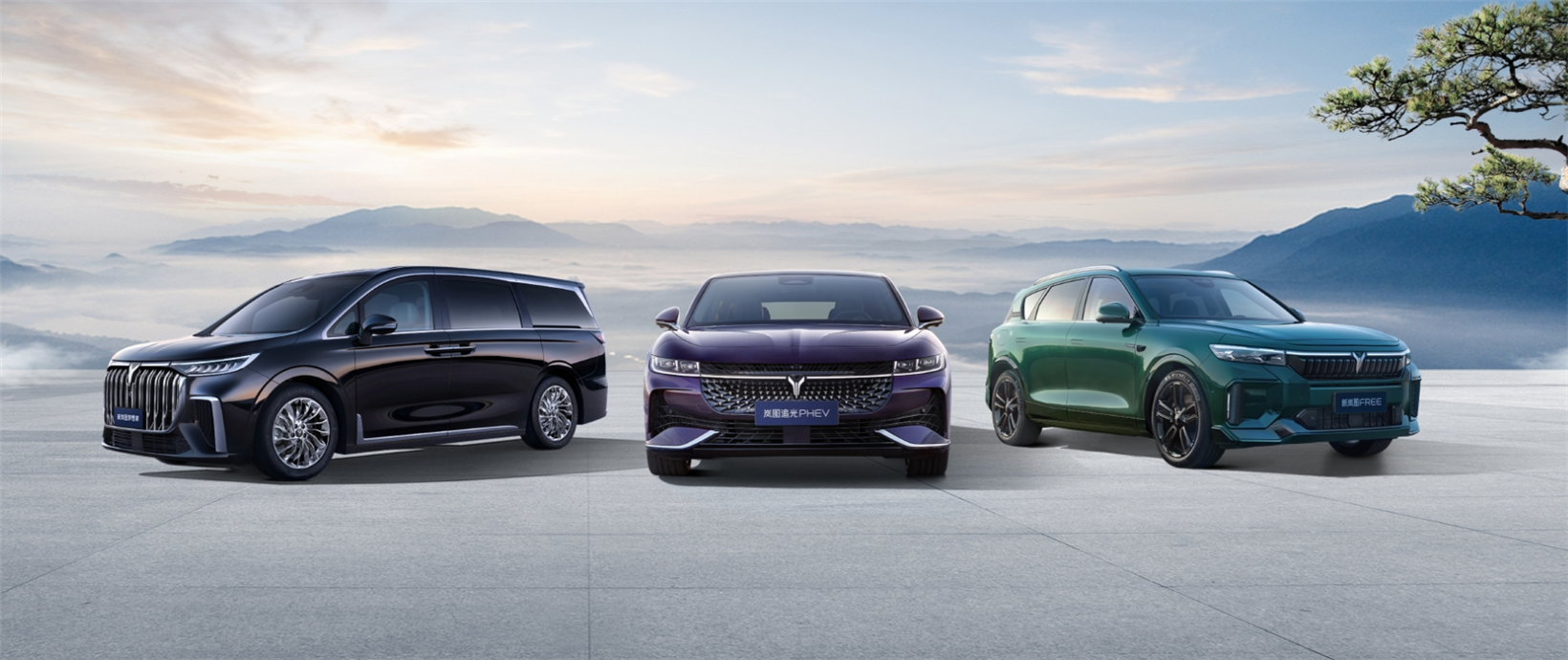
Photo credit: VOYAH
With a series of strategies such as launching new products and reducing prices, VOYAH, the brand spearheading Dongfeng's new energy vehicle transformation efforts, finally made a breakthrough. Its sales surged 160% year on year to 50,500 units in 2023.
To facilitate the flourishing across its self-owned brands, Dongfeng wasted no time in rolling out new products in 2024.

eπ007; photo credit: Dongfeng Motor
On January 7, Dongfeng NAMMI launched and delivered its first model, the NAMMI 01. On February 14, Dongfeng eπ kicked off fixed-orders for its first model, the eπ007. In the first quarter of 2024, Dongfeng Aeolus plans to put the Haohan PHEV onto the market.
Rushing overseas, Dongfeng Motor expands into new markets
Dongfeng embarked on its overseas market expansion as early as May 1983, when it established an import and export company, becoming the first automotive enterprise to obtain foreign trade operating rights in China. Subsequently, Dongfeng officially ventured into overseas markets.
After years of effort, Dongfeng gradually formed its own approach in exploring overseas markets by building factories, opening stores, producing customized products, and sharing technological resources.

China Dongfeng Motor Industry Imp. & Exp. Co., Ltd.; photo credit: Dongfeng Motor
In April 2012, Dongfeng released its mid-term overseas business plan, and its import and export company transformed from a comprehensive trading company into an overseas sales company.
From then on, Dongfeng began to accelerate its globalization process. In September 2012, Dongfeng acquired the Swedish company T Engineering AB, establishing its first overseas R&D base in Sweden.
Following that, Dongfeng set up its first overseas KD assembly base in Iran and its first overseas sales company in Russia. In the meantime, the automaker built dealerships to promoted passenger cars in ASEAN countries like Vietnam.
By 2018, Dongfeng had sold over 800,000 vehicles overseas, with more than 30 types of vehicle models covering passenger,commercial, heavy-duty, light, and micro cars, which were exported to over 80 countries and regions.
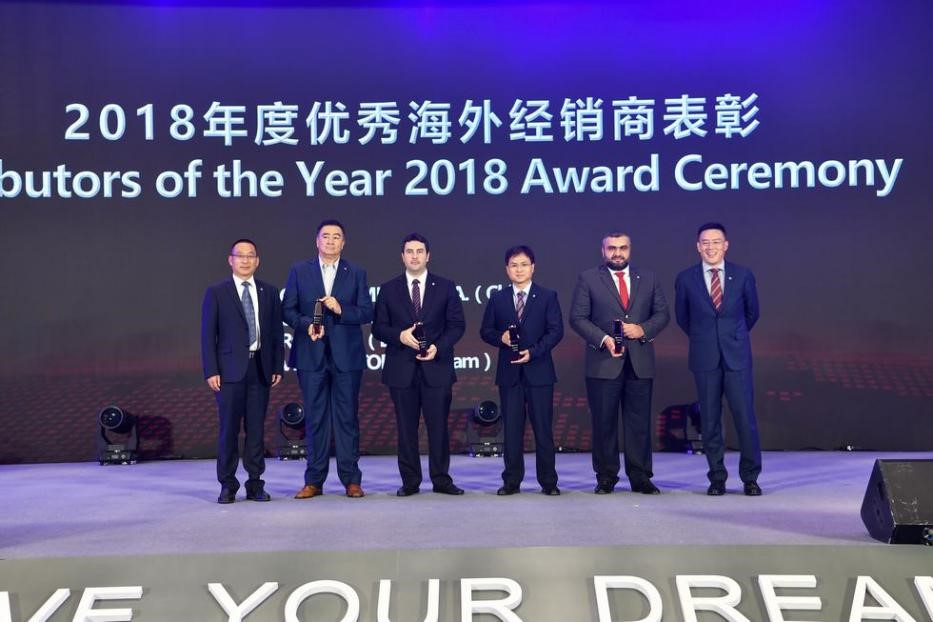
Photo credit: Dongfeng Motor
In February 2018, Dongfeng announced its 2018 to 2020 mid-term overseas business plan, aiming to achieve sales of 150,000 vehicles overseas by 2020 and enter mainstream European and American auto markets.
From 2019 to 2020, affected by international situations and product revamps, Dongfeng's KD project exports were hindered, leading to a production halt for some export models. In 2020, Dongfeng's automobile exports totaled only 68,800 units, less than half of the company’s mid-term overseas sales target.
In early 2022, Dongfeng instructed its import and export company to focus on increasing exports of Dongfeng's own-brand vehicles and set a goal of achieving 5,000 units of annual export volume for the Aeolus brand alone.
Therefore, Dongfeng Aeolus along with Dongfeng’s Technical Center and International Business Department, restructured its overseas team, established a dedicated platform, actively expanded automobile exports, and successfully achieved its target, with annual overseas sales surging from 770 units to over 6,000 units.
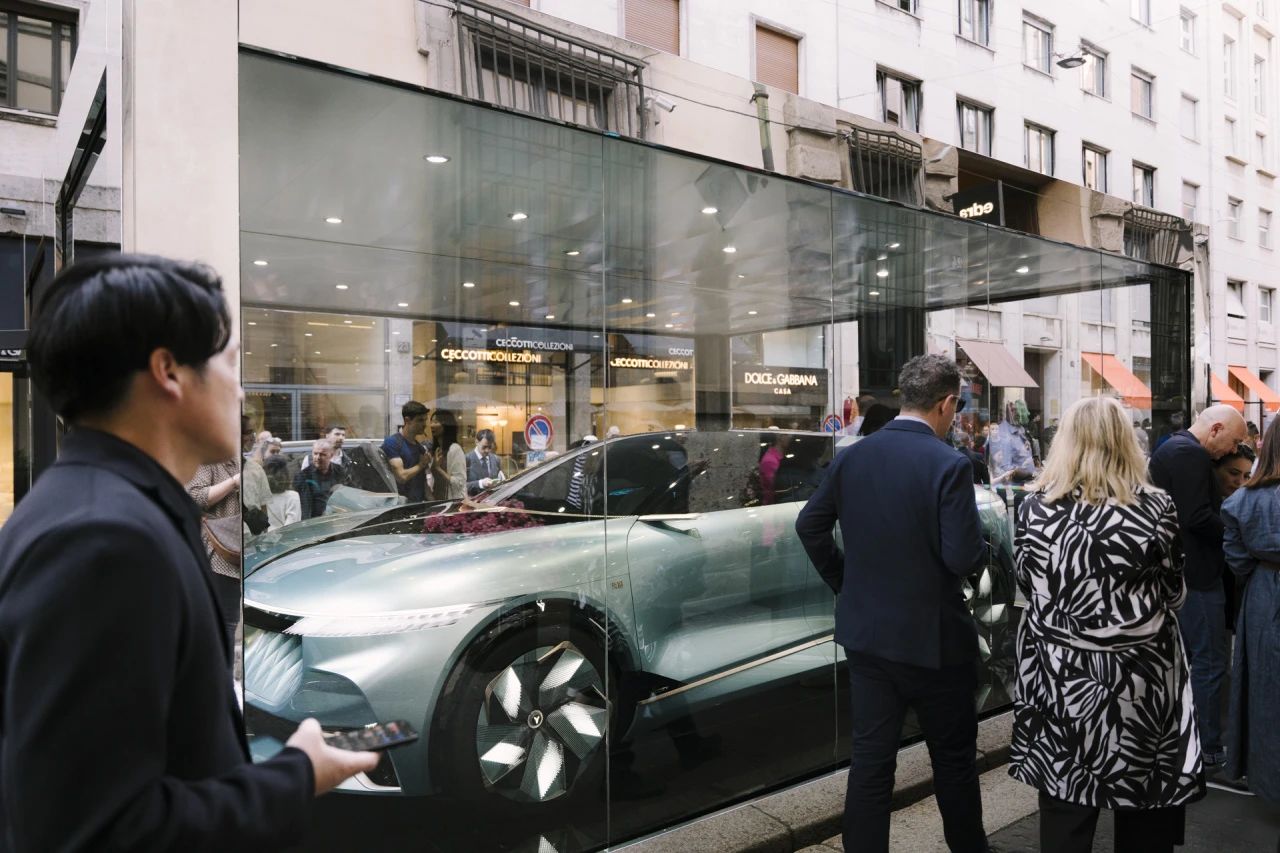
VOYAH in Italy; photo credit: Dongfeng Motor
In April 2023, Dongfeng continued to ramp up its presence in overseas markets. It plans to synchronize the development of globally-oriented vehicle models and push its new energy vehicle brand into developed countries in Europe. By 2025, Dongfeng's wholly-owned brands’ exports are expected to account for no less than 10% of their total sales.
Currently, Dongfeng Aeolus has successfully entered South America, the Middle East, and other regions. VOYAH has forayed into Norway, Finland, Denmark, Russia, and the UAE, among others, and continues to expand its overseas model lineup.
In January 2024, Dongfeng's import and export company signed a cooperation agreement with Spain's Salvador Caetano Group, announcing that VOYAH, MHERO, and Dongfeng-branded electric vehicles will be launched in Spain, Portugal, and other countries in 2024.
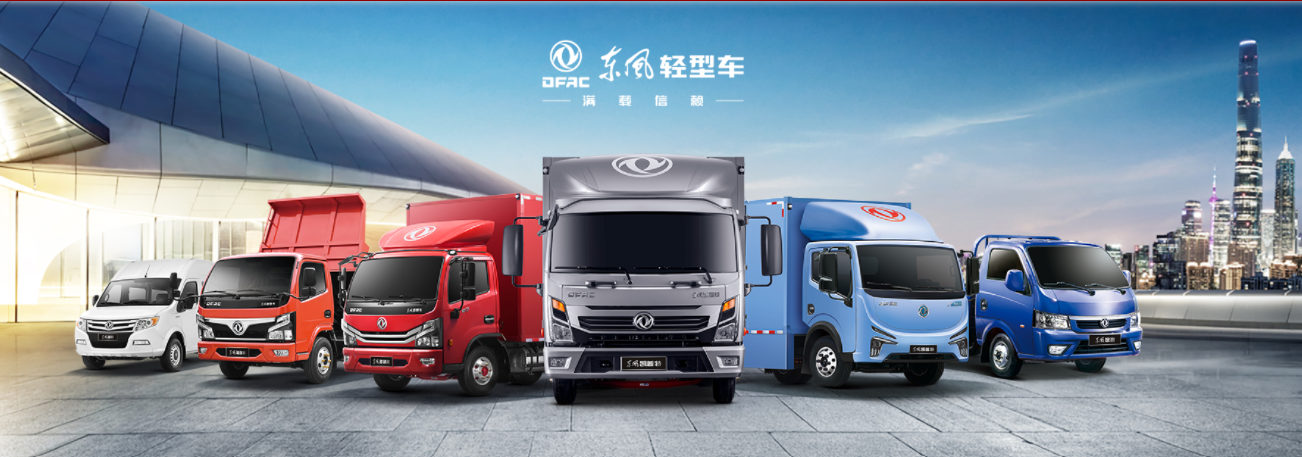
Photo credit: Dongfeng Motor
On the other hand, Dongfeng's commercial vehicle brand is also actively expanding into overseas markets.
Currently, Dongfeng has realized prominent growth in regional markets such as Africa and Southeast Asia. From January to October last year, Dongfeng exported 1,269 commercial vehicles in Africa alone, exceeding the full-year total in 2022. Moreover, Dongfeng's tractors hold over 90% of share in the Myanmar market.
In 2023, Dongfeng exported 12,500 commercial vehicles to overseas markets, representing a year-on-year surge of 181.7%.






